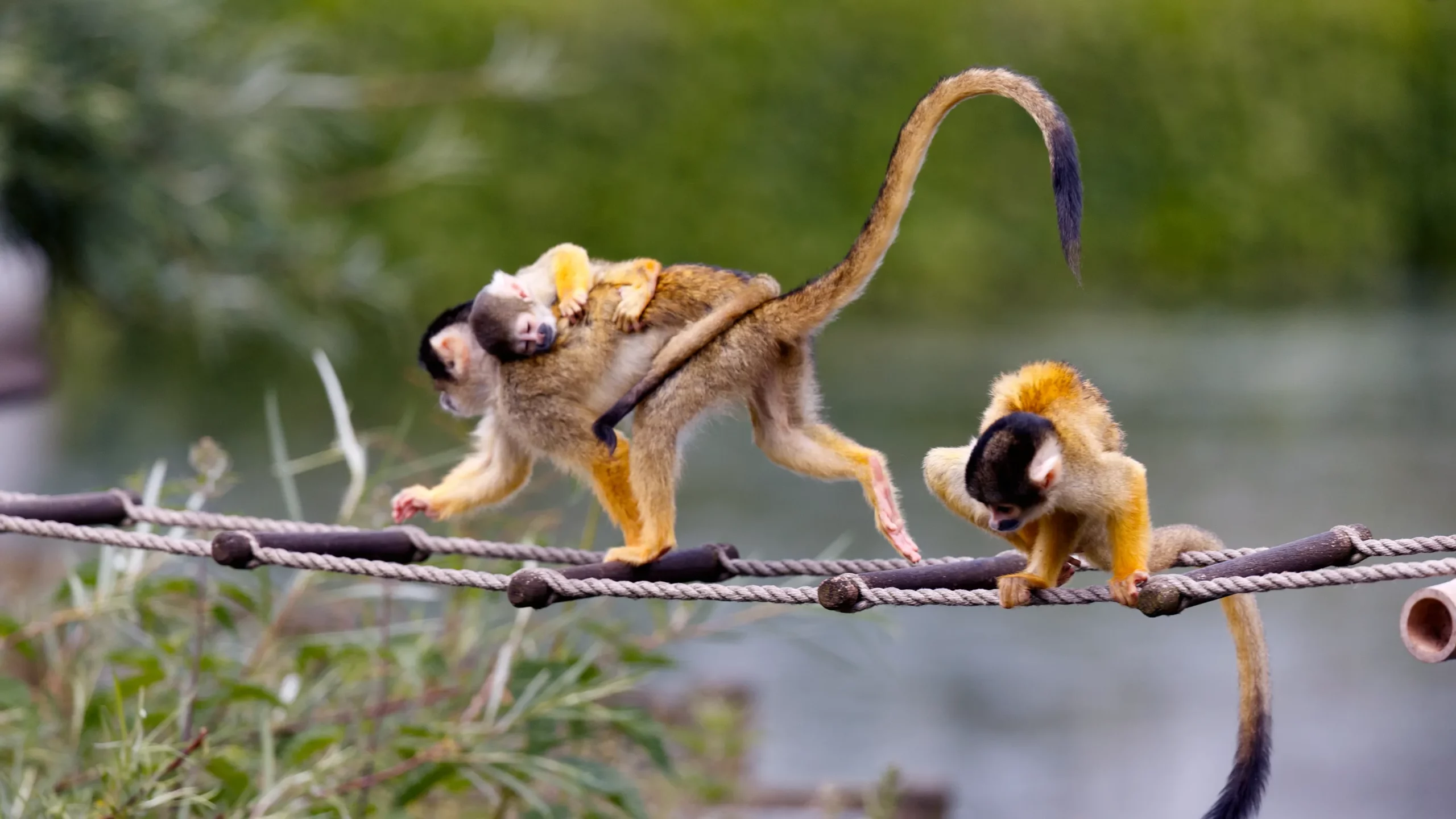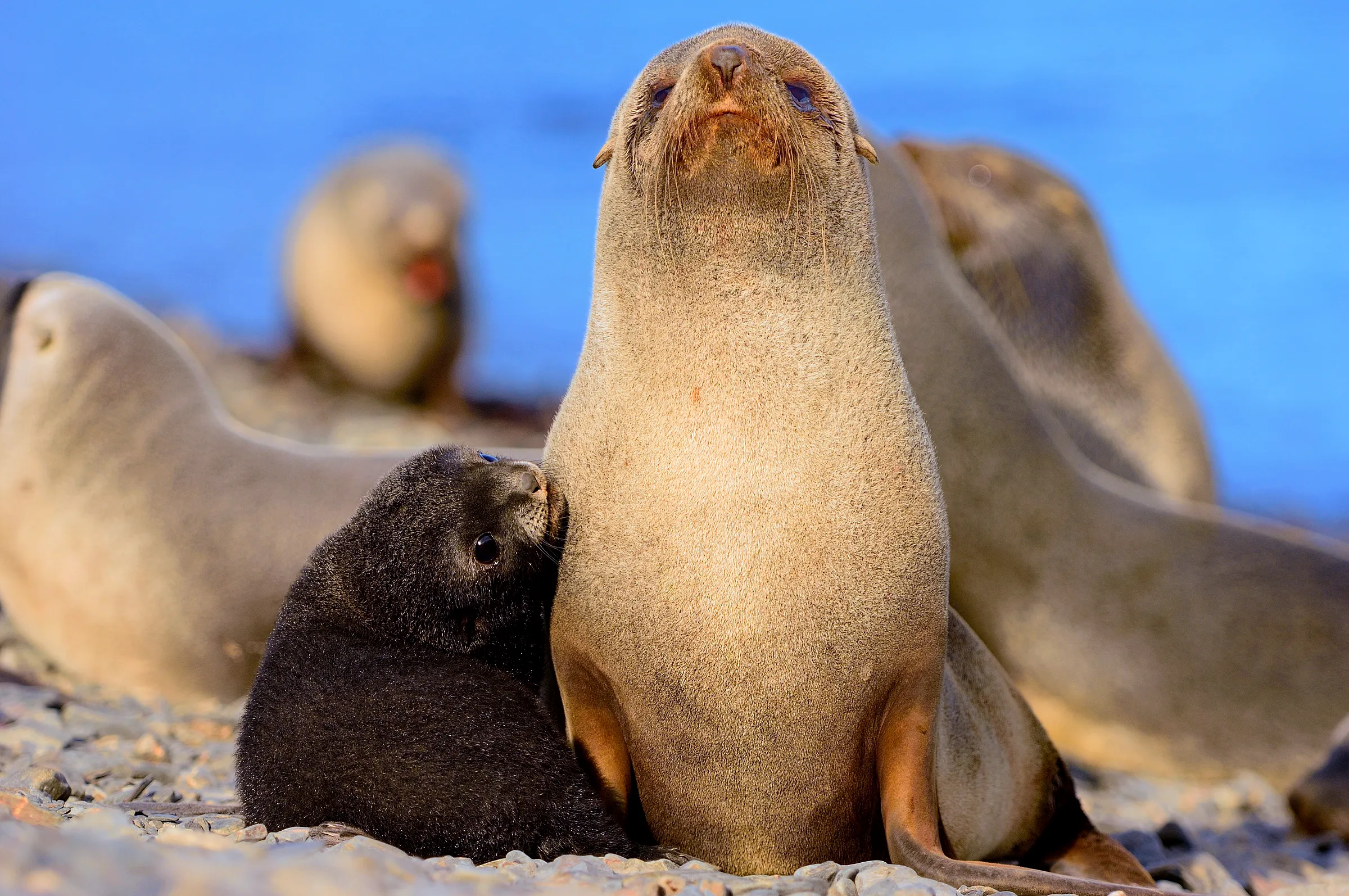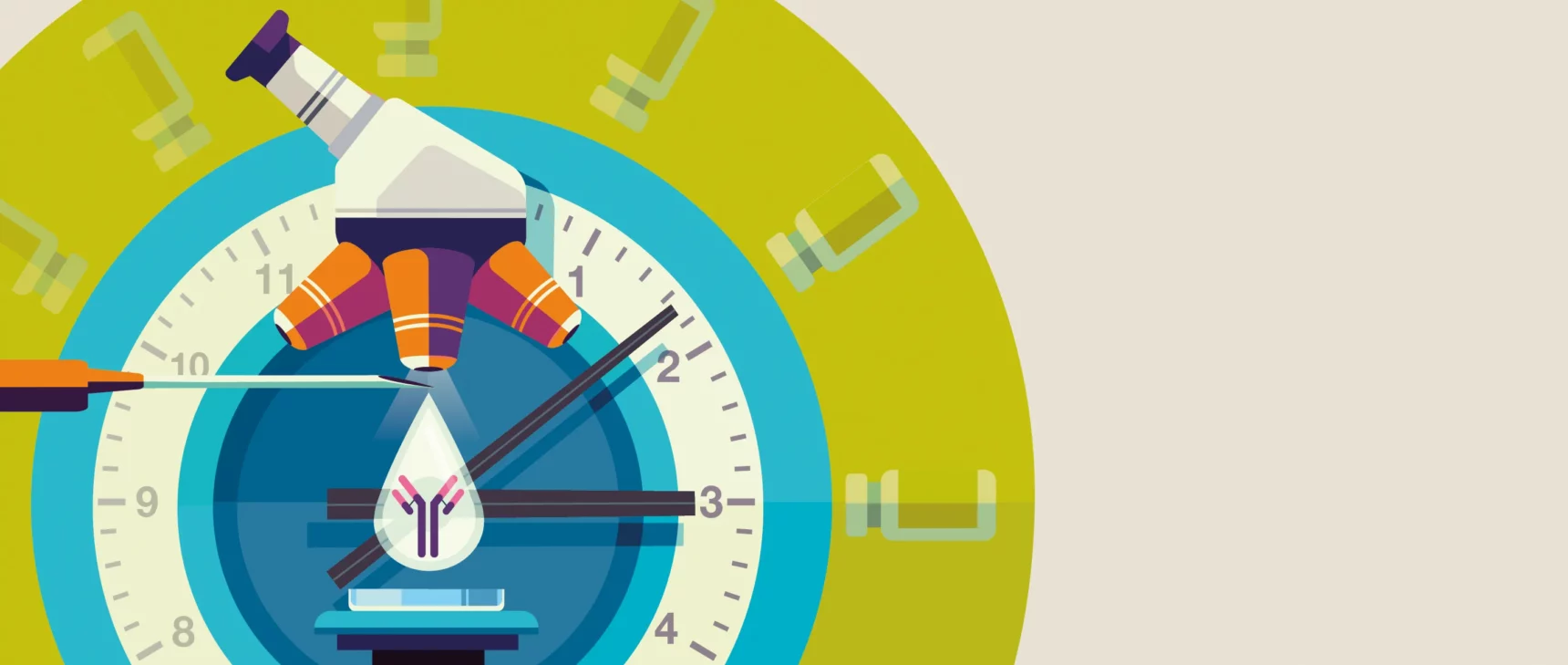Animal Mutation Rates Reveal Traits That Speed Evolution

A new study looked at the rates of mutations that arose between parents and their offspring in 68 vertebrate species, including Bolivian squirrel monkeys.
Frank Rønsholt, Copenhagen Zoo
Introduction
In the children’s game telephone, a whispered phrase like “I ate a pear” can quickly become “I hate bears” as it moves down a line of players. As genes are passed down from parents to offspring, they too can gradually be transformed by small copying errors, sometimes leading to new, useful traits. Knowing the tempo of inherited mutations is critical to understanding how species evolve. Yet until recently, the wildly divergent rates at which life can mutate were known for only a handful of species.
Now, a massive analysis of 68 diverse vertebrate species, from lizards and penguins to humans and whales, has made the first large-scale comparison of the rates at which species mutate — a first step toward understanding how quickly they can evolve. The findings, published in the journal Nature, unearthed surprising insights into how the tempo for mutations can change and what sets that pace.
The paper roughly “doubles the amount of mutation-rate estimates we have,” said Michael Lynch, an evolutionary biologist at Arizona State University who was not involved in the study. Now we have a “better idea of the amount of variation within vertebrates.”
With this extensive data, biologists can begin to answer questions about which traits most influence mutation rates and the pace of evolution. “There are things that affect the rate of evolution, [but] we don’t know all of them,” said Patricia Foster, a professor emerita of biology at Indiana University who was not involved in the study. “This is the start.”
The measurements of mutation rates could be critically useful in calibrating the gene-based molecular clocks that biologists use to determine when species diverged, and they offer useful tests of several theories about how evolution works. They also confirm that factors that help set the speed of evolution are themselves subject to evolution. “Germline mutation, like any other trait, is under natural selection,” said Lucie Bergeron, the lead author of the new study.
The Power of Three
Although the advanced DNA sequencing technologies that made the study possible have been around for years, it was clear that a large multi-species comparison of mutation rates would involve so much work that “no one went into it,” said Bergeron, who tackled the project as part of her doctoral work at the University of Copenhagen. But with encouragement from her adviser, Guojie Zhang of the University of Copenhagen and Zhejiang University School of Medicine in China, Bergeron dived in.
Bergeron and her team first gathered blood and tissue samples from family trios — a mother, a father and one of their offspring — from species in zoos, farms, research institutes and museums all over the world. They then compared the DNA of the parents and the offspring in each trio to pinpoint genetic differences between the generations.

Antarctic fur seals reach sexual maturity at 3-4 years old and generally live 15-24 years. The new study found that animals with shorter generation times had fewer inherited mutations.
Oliver Krueger
If they found a mutation in around 50% of an offspring’s DNA, they concluded that it was likely a germline mutation — one inherited through either the mother’s egg or the father’s sperm. Natural selection can act directly on such a mutation. Less frequent mutations were deemed to have happened spontaneously in tissues outside the germline; they were less relevant to evolution because they wouldn’t get passed on.
(Surprisingly often, mismatches in the family trios told the researchers that the fathers listed by the zoos were unrelated to the babies. Zoo representatives would often shrug at this news and say there might have been two males in the cage. “Yeah, well, the other one is the winner,” Bergeron would joke.)
In the end, the researchers had 151 usable trios, representing species as physically, metabolically and behaviorally diverse as massive killer whales, tiny Siamese fighting fish, Texas banded geckos and humans. They then compared the species’ mutation rates with what we know about the behaviors and characteristics called their life history. They also considered a statistical measure for each species called the effective population size, which roughly corresponds to how many individuals are needed to represent the genetic diversity. (For example, although the human population today is 8 billion, scientists usually estimate our effective population size to be around 10,000 or fewer.) Bergeron and her colleagues looked for patterns of associations in the numbers.
The most surprising finding that emerged from the data was the wide range of germline mutation rates. When the researchers measured how often the mutations occurred per generation, the species varied by only about fortyfold, which Bergeron said seemed quite small compared to the differences in body size, longevity and other traits. But when they looked at the mutation rates per year rather than per generation, the range increased to about 120-fold, which was larger than previous studies had suggested.
The Sources of Variation
The study authors found that the higher the average effective population size for a species, the lower its mutation rate. That provided good evidence for the “drift-barrier hypothesis,” which Lynch devised a little over a decade ago. “Selection is relentlessly trying to reduce the mutation rate because most mutations are deleterious,” Lynch explained. But in species with smaller effective population sizes, natural selection gets weaker because genetic drift — the effect of pure chance on the spread of a mutation — gets stronger. That allows the mutation rate to rise.
The findings also support another idea in the scientific literature, the male-driven evolution hypothesis, which proposes that males may contribute more mutations to the evolution of some species than females do. Bergeron and her colleagues found that germline mutation rates tended to be higher for males than for females — at least in mammals and birds, though not in reptiles and fish.
The authors noted a possible reason for those differences: Because males in all species copy their DNA constantly to make sperm, they face endless opportunities for mutations to occur. Female fish and reptiles make eggs throughout their lifetimes too, so they run a similar risk of genetic error. But female mammals and birds are essentially born with all the egg cells they will ever produce, so their germlines are more protected.
Life history traits accounted for about 18% of the variation that the researchers found. The biggest of those effects came from a species’ generation time, the average age at which it reproduces: As the age of the parents rose, so did the mutation rates.
Because Bergeron included herself, her brother and their parents in the study for human data, she can see this pattern in her own family. “I carry more mutations than my brother, because my dad was older when he had me,” she said.
Factors like maturation time and numbers of offspring also played a role for some vertebrates, but contrary to expectations, the researchers didn’t find any effect related to body size. There’s a long-standing hypothesis that creatures with bigger body sizes should have more mutations because they have more cells and thus more opportunities for the DNA-copying machinery to make mistakes.
“It was surprising to see that generation time seemed a lot more important than body size,” said Kelley Harris, an assistant professor of genome sciences at the University of Washington. “In the previous literature, those hypotheses are more on equal footing.”
Harris commended the findings as an exciting start to answering some of these big questions about what factors are the most important determiners of mutation rate and thus evolution. Beyond that, the study hints at just how much biodiversity exists in nature.
“The diversity of life isn’t just what animals look like,” she said. There are “all these traits that you can’t see, and being able to observe it in studies like this just makes biodiversity even more exciting.”



